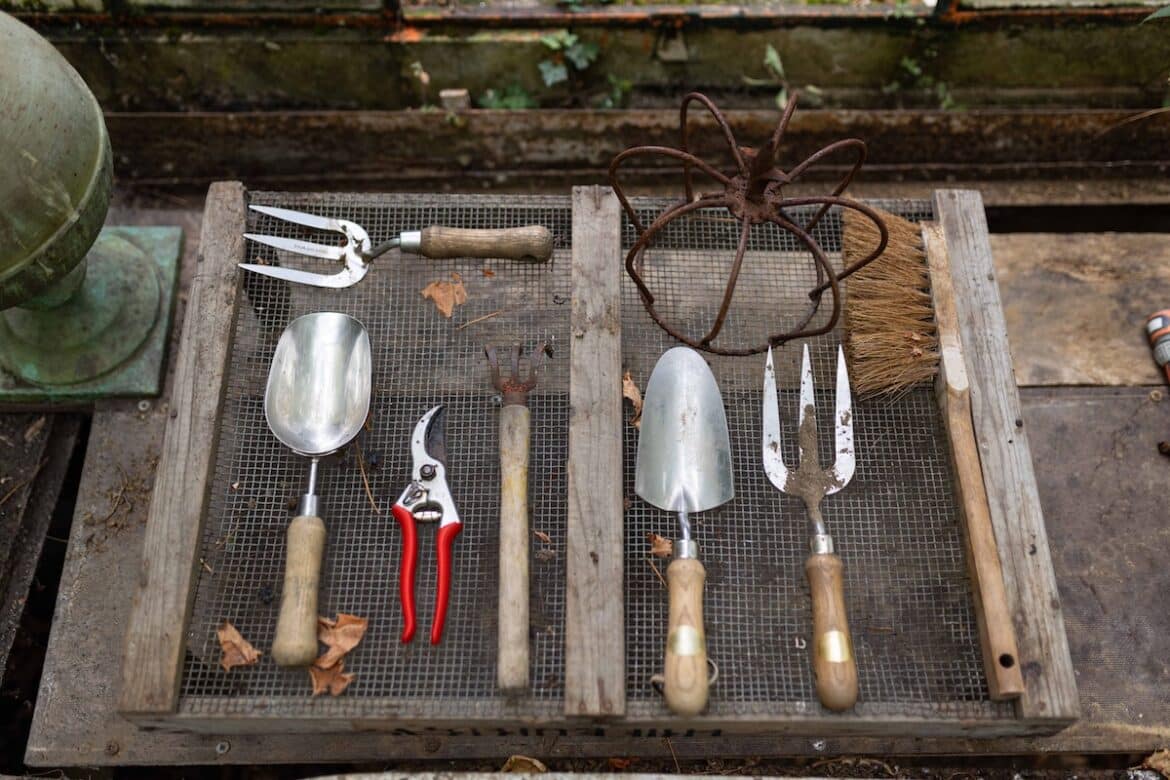Photo by Edouardo Grassi @gaspardatable
As the leaves are falling and the flowers in our gardens are shouting their last hoorah, it’s time to think about the year to come, and what you are hoping and planning for. A bountiful garden is highly dependent on a healthy foundation. So, as we approach that time of the year, we turn to our gardening expert, Sharon Santoni, for tips on how to put the garden to bed.
SUBSCRIBE TO THE MAGAZINE
Here in France, we put the garden to bed in November. We’re into the first frosts, the dahlias have died back, and it’s time to choose which plants you leave for their winter interest – either because they have seed heads or beautifully shaped branches.
As you are deciding which plants to cut back so they can gather strength during the winter months, there are a few things I suggest keeping in mind as you prepare the garden for the year to come.
Tip #1: Dream about next year.
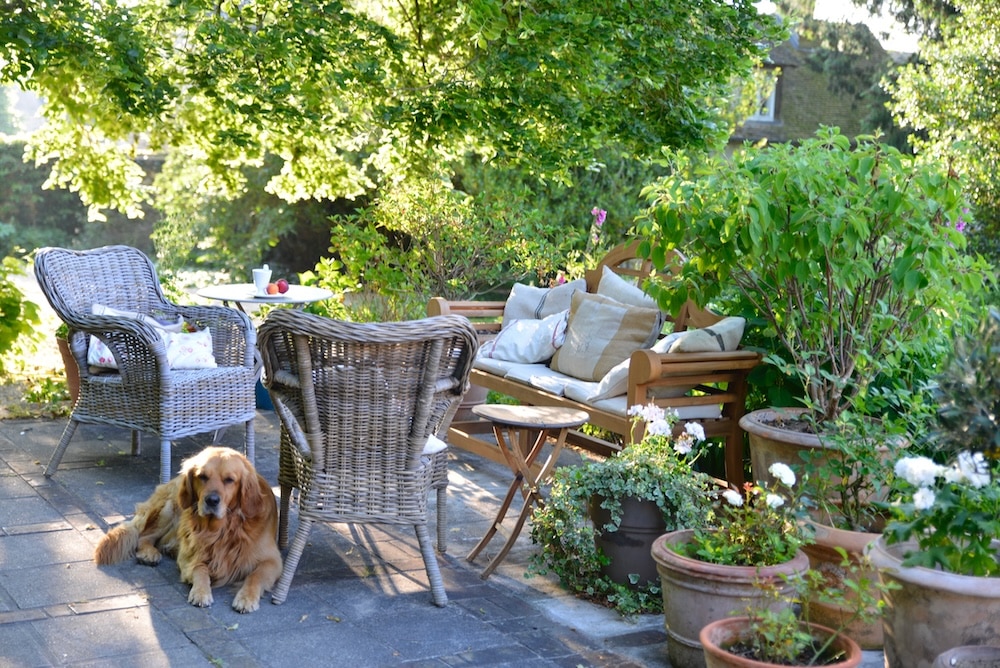
This is the time to think of something new for your garden – it doesn’t have to be huge. Sit with your inspiration boards for next spring and summer. For example, is there something new you wish to see from your kitchen window? Should the garden furniture be moved around?
When it really gets too wet and cold to get outside, sit in front of the fire with a seed catalog and dream about the colors you’re going to grow next year. (It’s the closest thing I have to therapy.)
Tip #2: Now is the time for heavy remodeling.
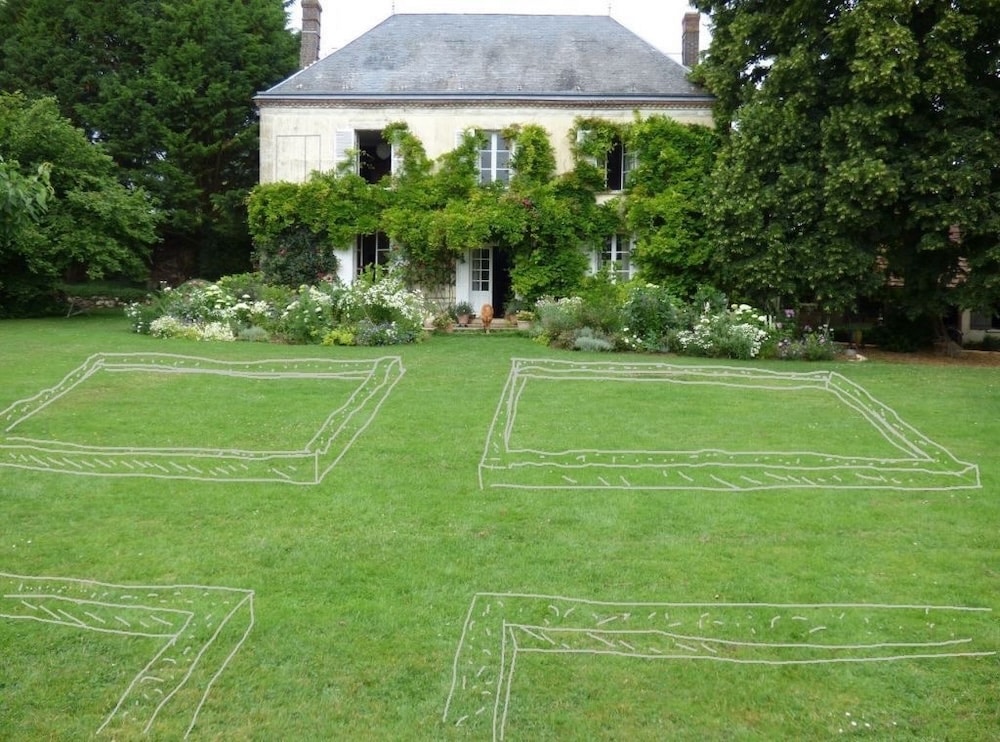
It is much easier to make a mess and dig up the lawn now as opposed to in the spring and summer when you want to be out enjoying the garden. Do you need new irrigation, or would you like to put in a fresh lighting system? Now is the time to install these things so that you aren’t worrying about it later.
Tip #3: Leave the leaf blower in the shed.
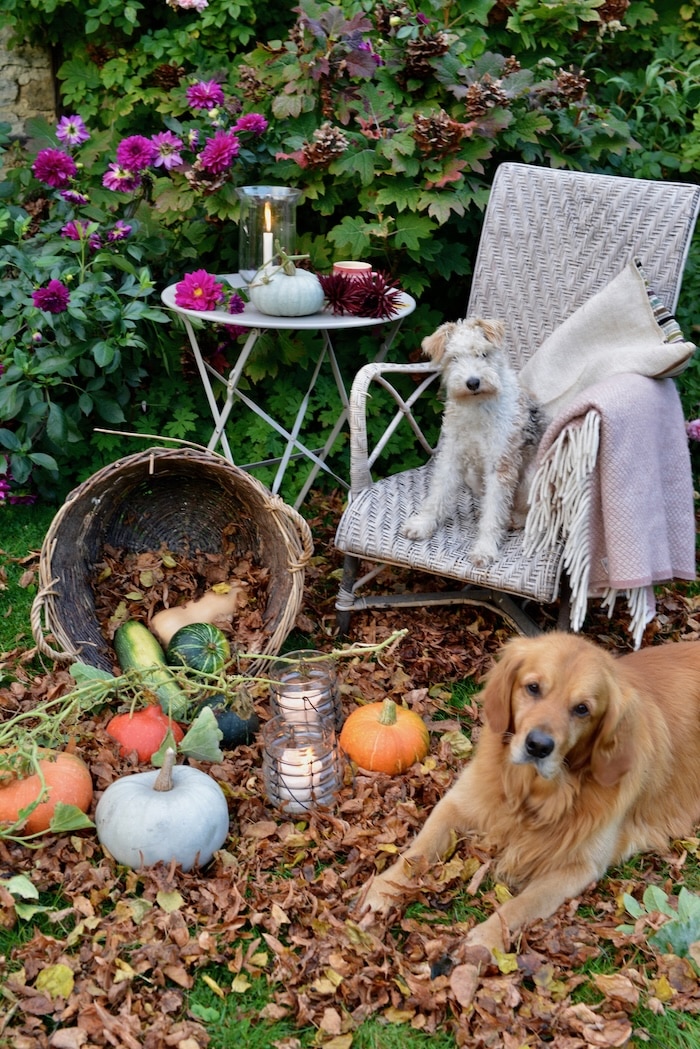
Don’t use it. The flower beds need the protection and coverage that the leaves provide. Also, think about the wildlife in your garden – by letting leaves pile up and mulching, you’re giving critters a home for the winter. We all need to do our bit for wildlife and nature. Leaving places for the animals and small insects to shelter is a good way to start.
Tip #4: Heavily mulch your flower beds.
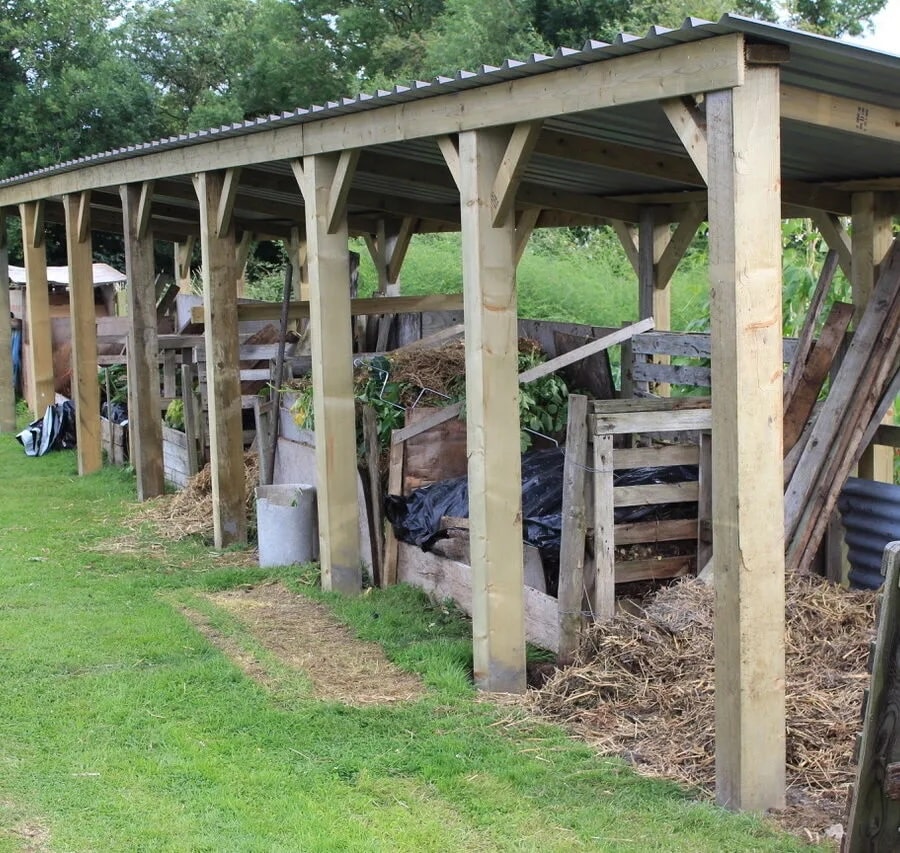
You can mulch heavily in the spring and in the fall. This is hands down the best way to improve the quality of your soil. It is best to mulch with compost and leaf mold. I always caution gardeners to not use fresh manure because it will burn the plants.
Tip #5: Move plants around.
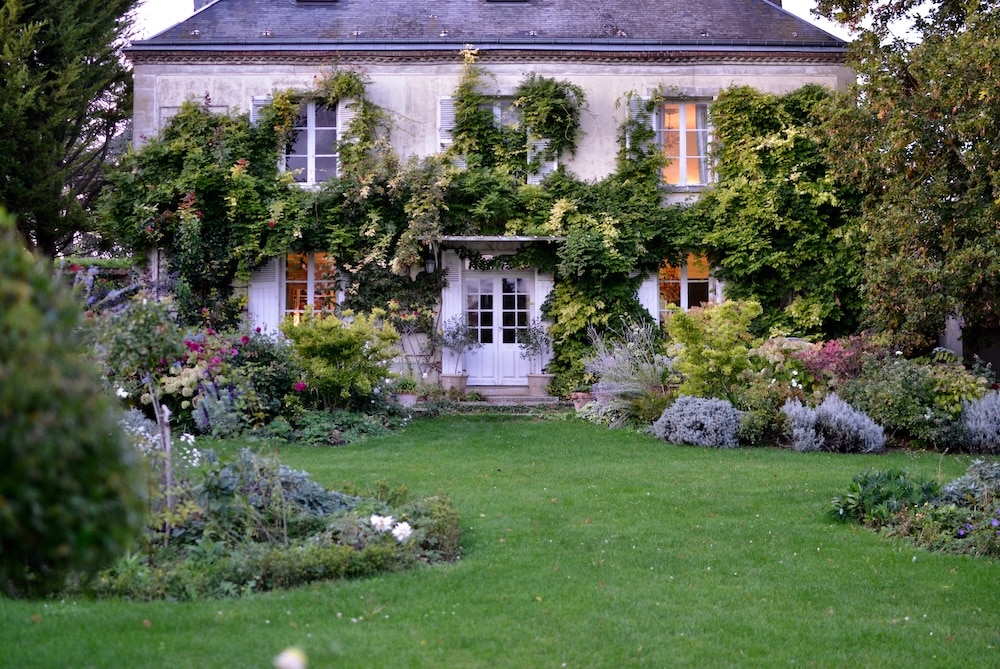
This is the ideal time to move plants around. If you’ve noticed that something wasn’t growing well or had outgrown its spot or is giving too much shade to another plant or has simply grown too big and needs to be divided, this is the time to do it. Plants that can be divided well at this time of year are peonies, irises, crocosmia, salvia.
As you are doing this, do not underestimate the importance of different heights in your flower beds during the winter.
Tip #6: Train the roses.


You’ll probably have been pruning your roses through the summer for regrowth. At the onset of winter, the branches are more supple, and you can think about training them into shape for next spring. If you want to learn from the queen of trained roses, head to the Instagram of Jenny Barnes @niff_barnes. Whatever you do in the winter, it will pay back next spring.
Tip #7: Decide what to do with the dahlias.
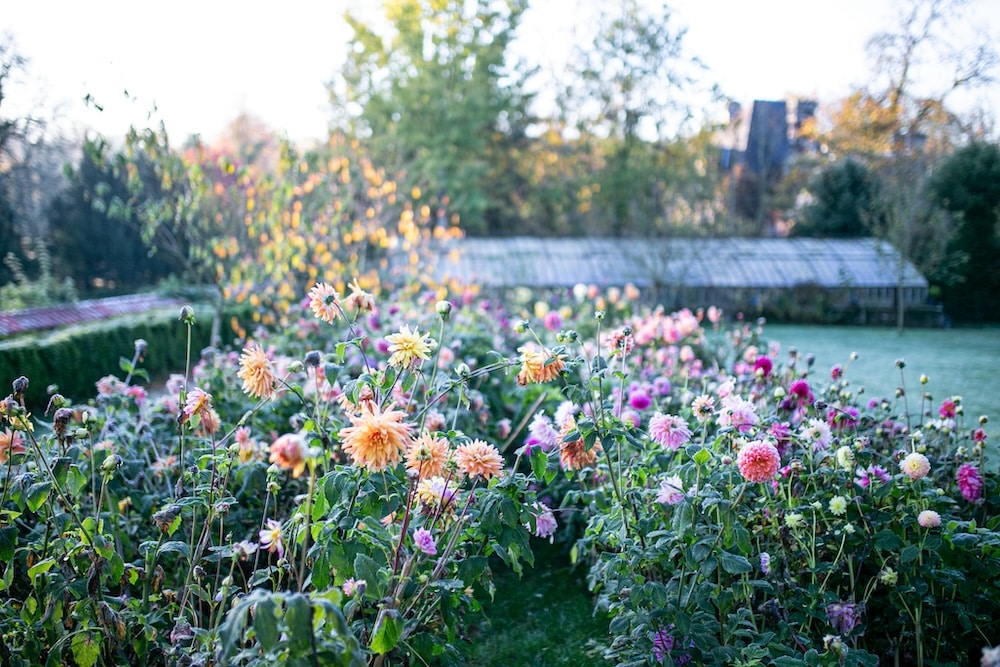
Dahlias have performed well all through late summer and the fall, and you now have two choices for winter: the hard way or the easy way. You can either lift them and store them which means they will need to be divided and replanted in the spring (this is the harder option). Or you can test your luck and leave them in the ground because it is a lot less work, and they do typically come back. However, you run the risk of them not surviving the winter.
In my experience, you don’t lose too many dahlias if you leave them in the ground, and in any case they will all need lifting and dividing at some point, simply to keep their size manageable.
Tip #8: Don’t plant your spring bulbs too early.
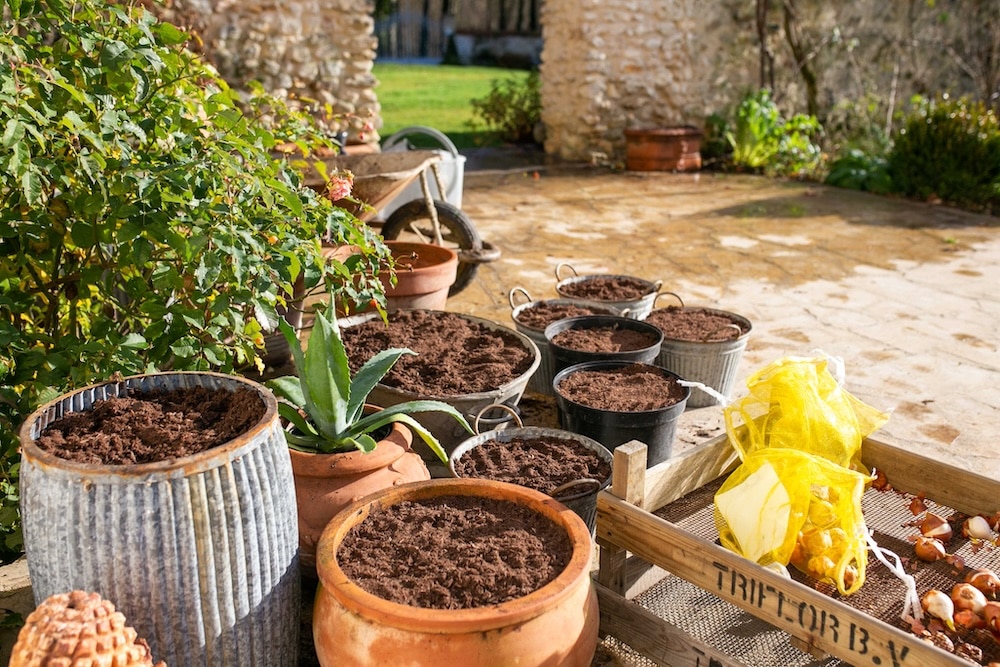
Tulip bulbs should not be planted too early because if they sit in a long wet patch in the fall, they will rot. I tend to plant my bulbs the day after Christmas which is always a fun post-meal activity with the family! However, daffodil bulbs can go down earlier. Perhaps this would be a delightful day-after-Thanksgiving activity for our American readers!

